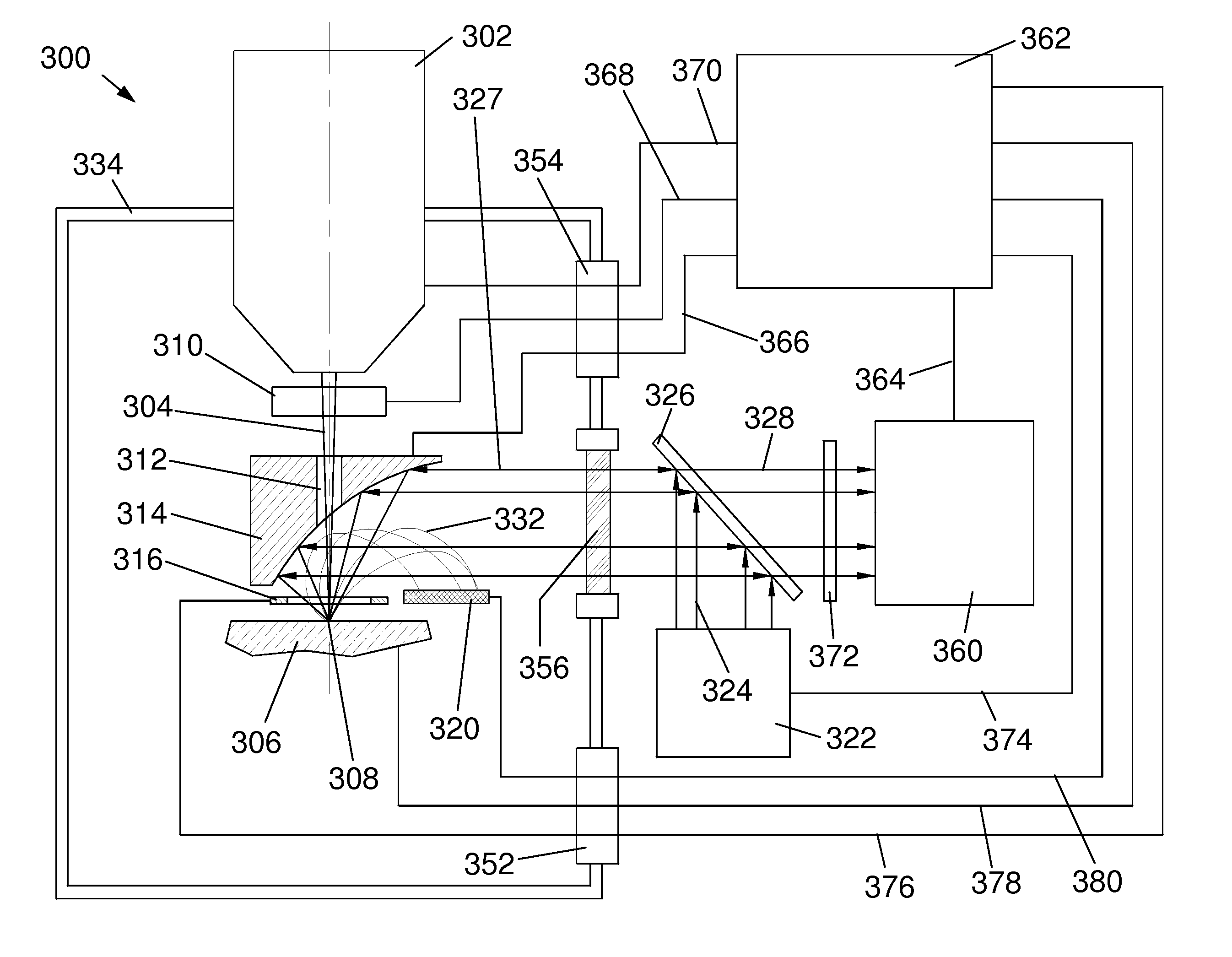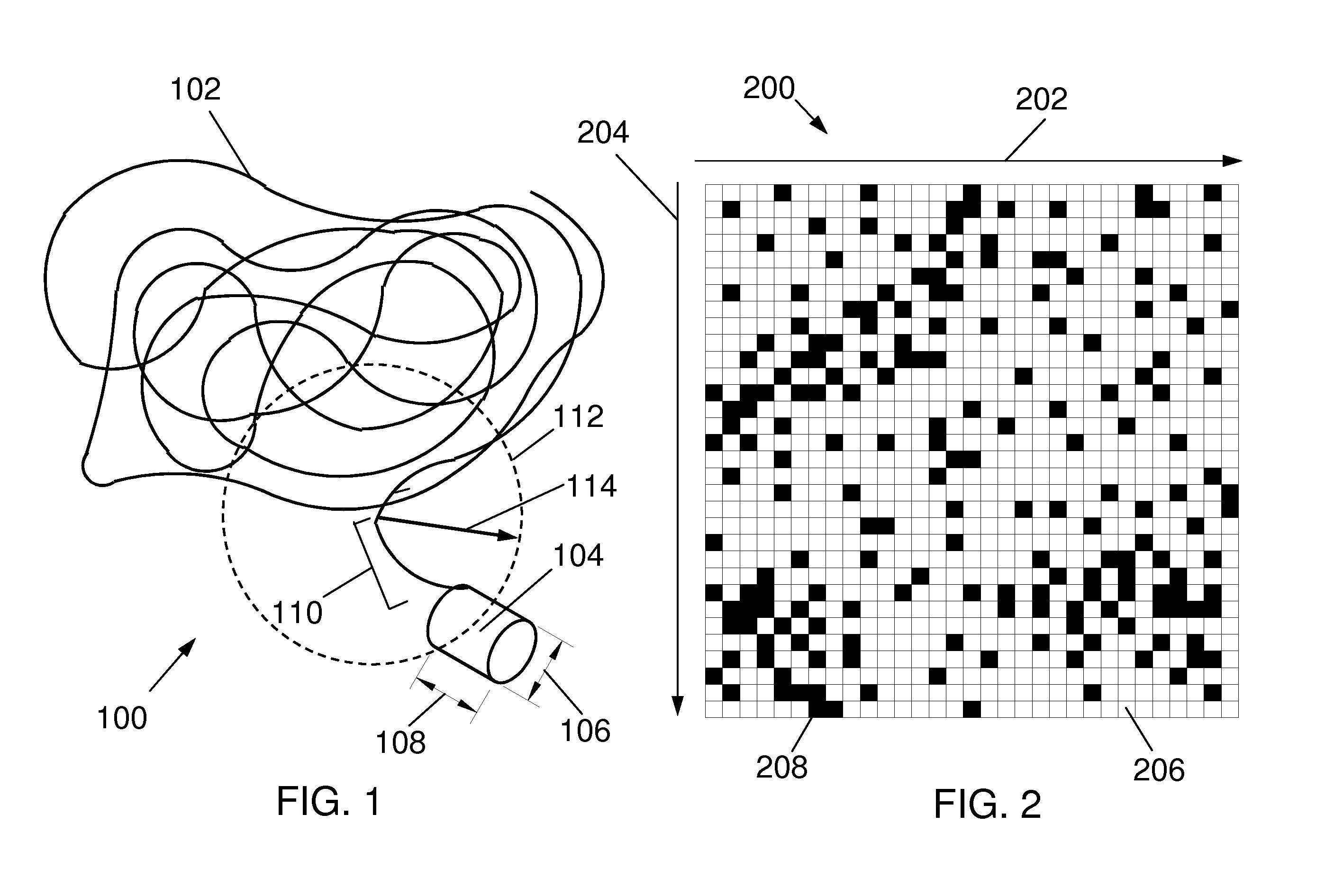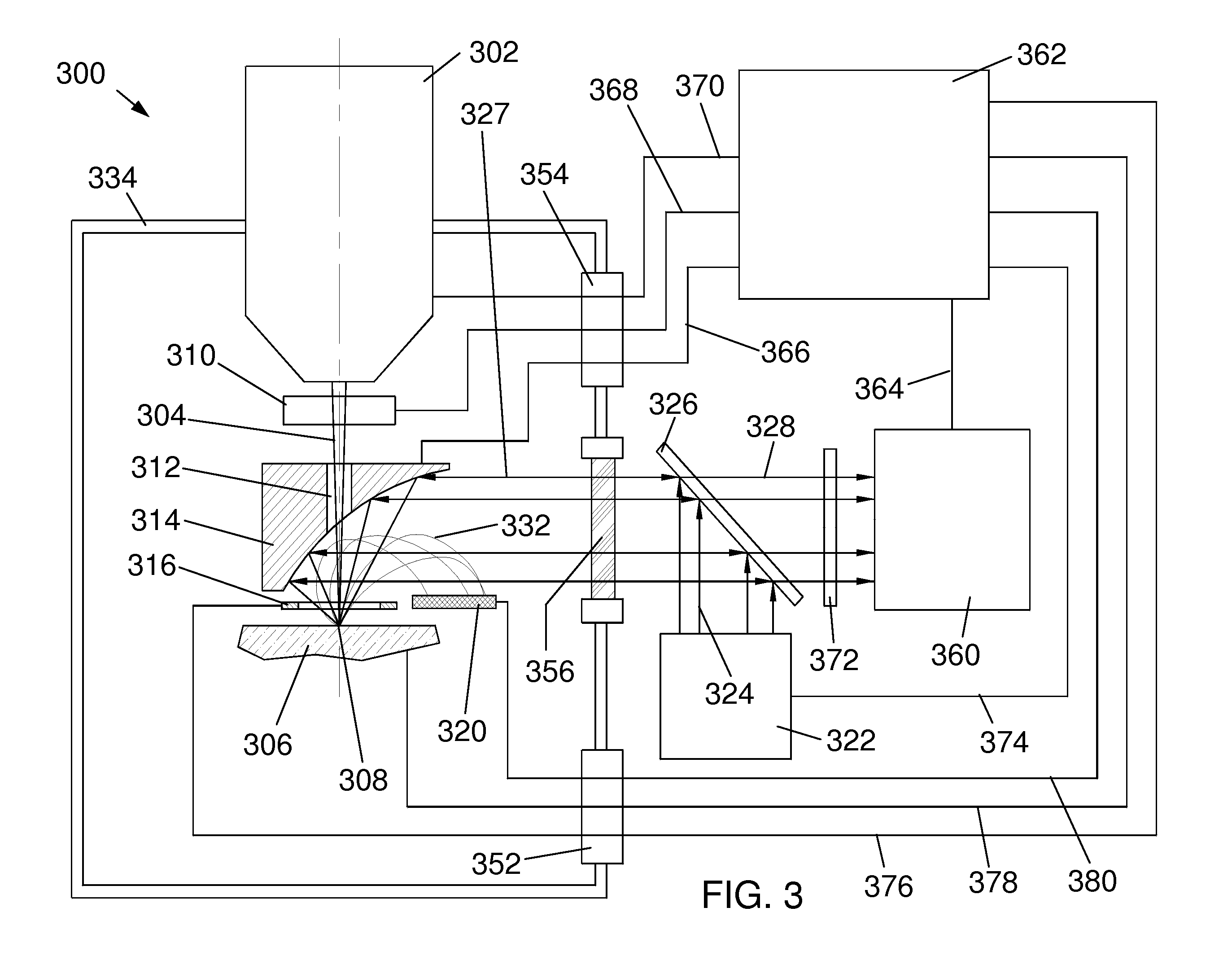System and Method for Localization of Large Numbers of Fluorescent Markers in Biological Samples
a fluorescent marker and biological sample technology, applied in material analysis using wave/particle radiation, instruments, nuclear engineering, etc., can solve the problems of limiting the application of fms, affecting the image quality, and many minutes of imaging,
- Summary
- Abstract
- Description
- Claims
- Application Information
AI Technical Summary
Benefits of technology
Problems solved by technology
Method used
Image
Examples
first embodiment
Detector Optics Above the Sample
[0043]FIG. 3 is a schematic diagram of a first embodiment 300 of the present invention comprising detector optics above the sample 306. Sample 306 may include a biological sample including fluorescent markers that are expressed by genes linked to genes of interest or including inorganic markers that selectively attach to particular intracellular components. Sample 306 may also include a biological sample including dyes or other inorganic markers, such as quantum dots, that are functionalized to enable selective attachment to particular intracellular components. Sample 306 sits on a sample stage at a sample position that defines a sample plane.
[0044]A charged particle column 302, such as an electron beam column or a focused ion beam column, generates a beam 304 of charged particles that is focused by column 302 onto the surface of a sample 306 at a location 308. Electrons in the beam typically have energies of between 1,000 eV and 25,000 eV. Ions typic...
second embodiment
Detector Optics Below the Sample
[0052]FIG. 5 is a schematic diagram of a second embodiment 500 of the present invention comprising detector optics below a sample 506. A charged particle column 502, such as an electron beam column or a focused ion beam column, generates a beam 504 of charged particles which is focused by column 502 onto the surface of the sample 506 at a location 508. Beam 504 typically includes electrons having energies between about 50 keV and 300 keV. An X-Y beam deflector 510, which may comprise magnetic coils, electrostatic multipoles, or a combination of both magnetic coils and electrostatic multipoles, is configured to move the beam 504 around on the surface of the sample 506, typically in an X-Y raster pattern for imaging. In this second embodiment 500 of the invention, the sample 506 is assumed to be thin enough to permit penetration of the beam 504 through the sample 506, thus all imaging signals (both light and charged particles) are collected below the sa...
third embodiment
Detector Optics both Above and Below the Sample
[0056]FIG. 6 is a schematic diagram of a third embodiment 600 of the present invention comprising detector optics both above and below the sample 606. A charged particle column 602, such as an electron beam column or a focused ion beam column, generates a beam 604 of charged particles which is focused by column 602 onto the surface of a sample 606 at a location 608. An X-Y beam deflector 610, which may comprise magnetic coils, electrostatic multipoles, or a combination of both magnetic coils and electrostatic multipoles, is configured to move the beam 604 around on the surface of the sample 606, typically in an X-Y raster pattern for imaging. In this third embodiment 600 of the invention, the sample 606 is assumed to be thin enough to permit penetration of the beam 604 through the sample 606. To achieve larger collection efficiencies for light, two paraboloidal minors 614 and 680 are positioned above and below the sample 606, respective...
PUM
| Property | Measurement | Unit |
|---|---|---|
| diameter | aaaaa | aaaaa |
| diameter | aaaaa | aaaaa |
| FWHM | aaaaa | aaaaa |
Abstract
Description
Claims
Application Information
 Login to View More
Login to View More - R&D
- Intellectual Property
- Life Sciences
- Materials
- Tech Scout
- Unparalleled Data Quality
- Higher Quality Content
- 60% Fewer Hallucinations
Browse by: Latest US Patents, China's latest patents, Technical Efficacy Thesaurus, Application Domain, Technology Topic, Popular Technical Reports.
© 2025 PatSnap. All rights reserved.Legal|Privacy policy|Modern Slavery Act Transparency Statement|Sitemap|About US| Contact US: help@patsnap.com



